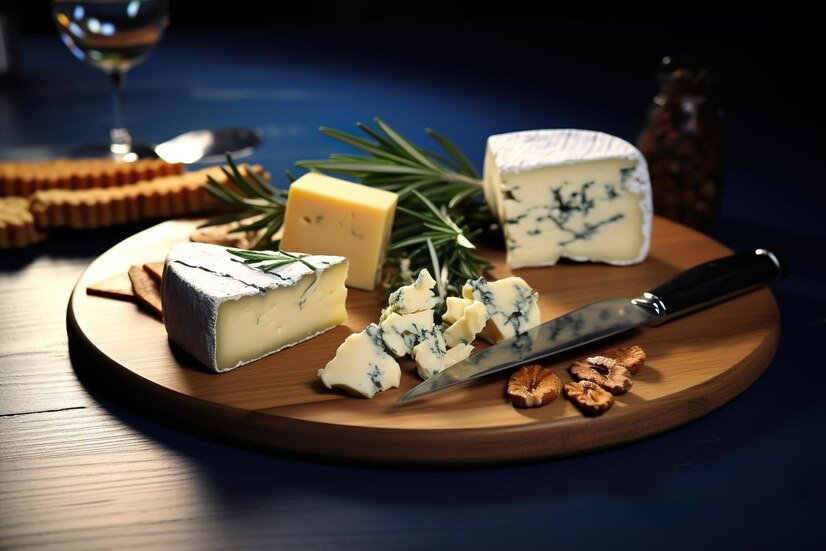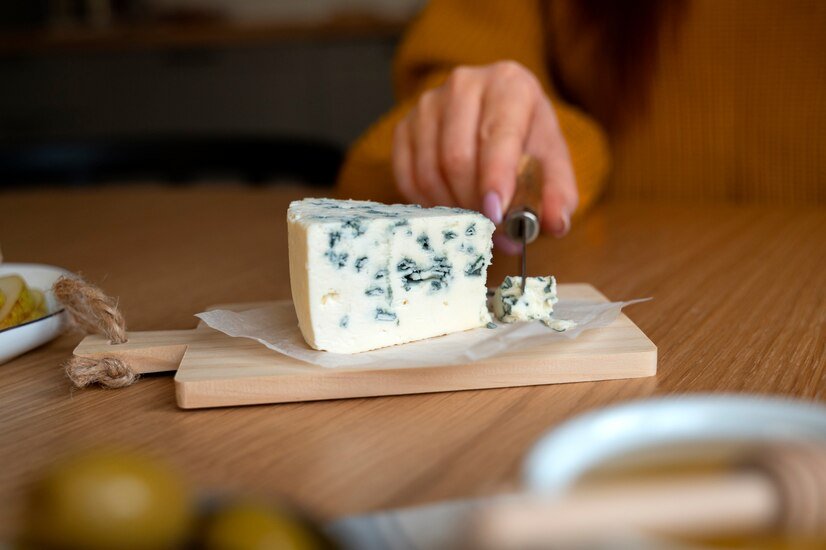FOOD
Blue Cheese: A Culinary Delight 4
Blue cheese, with its distinctive marbled appearance and bold flavor,

Blue cheese, with its distinctive marbled appearance and bold flavor, holds a special place in the world of cheese enthusiasts. This pungent and creamy cheese is beloved by many for its unique taste and versatility in culinary applications. In this article, we delve into the fascinating world of blue cheese, exploring its history, production, culinary uses, health benefits, and more.
Blue cheese is a type of cheese characterized by its blue or blue-green veins, which are created by the introduction of mold cultures, such as Penicillium roqueforti or Penicillium glaucum, during the cheese-making process. The veins develop during aging, imparting a sharp and tangy flavor to the cheese.
History and Origin of Blue Cheese
The origins of blue cheese can be traced back to ancient times, with evidence suggesting that blue cheese was made as early as the Roman era. However, the specific origins of blue cheese are often attributed to various regions in Europe, including France, Italy, and England.
Varieties of Blue Cheese
Blue cheese comes in various varieties, each with its own unique flavor profile and characteristics. Some of the most popular varieties include:
Roquefort
Originating from the caves of Roquefort-sur-Soulzon in France, Roquefort is known for its crumbly texture and intense flavor.
Gorgonzola
Hailing from Italy, Gorgonzola is creamy and slightly sweet, with a pronounced blue veining throughout.
Stilton
A classic English blue cheese, Stilton is bold and robust, with a smooth and creamy texture.
Production Process of Blue Cheese
The production process of blue cheese involves several steps, including milk pasteurization, curdling, salting, molding, and aging. The addition of mold cultures is crucial in creating the characteristic blue veins that define blue cheese.
Flavor Profile and Characteristics
Blue cheese is renowned for its bold and assertive flavor, which can range from mild and creamy to sharp and tangy. The presence of mold cultures contributes to its distinctive aroma and taste.
Culinary Uses of Blue Cheese
Blue cheese is a versatile ingredient that can be used in a variety of culinary applications. It adds depth and complexity to salads, pastas, sauces, and dressings, and pairs beautifully with fruits, nuts, and honey.
Health Benefits of Blue Cheese
Despite its rich flavor, blue cheese offers several health benefits. It is a good source of protein, calcium, and vitamins, and contains beneficial probiotics that promote gut health.
Pairings with Blue Cheese
Blue cheese pairs well with a wide range of foods and beverages, including red wine, honey, figs, walnuts, and crusty bread.
Storing and Serving Blue Cheese
To preserve its flavor and texture, blue cheese should be stored in the refrigerator in airtight containers. It is best served at room temperature to allow its flavors to fully develop.
Popular Blue Cheese Recipes
From classic salads to indulgent appetizers, there are countless recipes that showcase the deliciousness of blue cheese. Some popular recipes include blue cheese burgers, pear and blue cheese salad, and blue cheese-stuffed mushrooms.
Myths and Facts about Blue Cheese
Despite its popularity, blue cheese is often surrounded by myths and misconceptions. One common myth is that blue cheese is unsafe to eat due to the presence of mold, but in reality, the mold cultures used in blue cheese production are safe to consume.
Sustainability in Blue Cheese Production
As consumers become more conscious of sustainability issues, there is a growing focus on sustainable practices in blue cheese production. Many artisanal producers are implementing environmentally friendly methods to reduce their carbon footprint and support local communities.
Exploring Artisanal Blue Cheese Makers
Artisanal blue cheese makers are dedicated to preserving traditional cheese-making techniques and producing high-quality cheeses with unique flavors and characteristics. By supporting these small-scale producers, consumers can experience the true artistry of blue cheese craftsmanship.
Blue Cheese in Popular Culture

Blue cheese has made its mark in popular culture, appearing in literature, film, and music. From decadent cheese plates in gourmet restaurants to cheesy catchphrases in comedy routines, blue cheese continues to captivate and inspire.
Conclusion
Blue cheese is more than just a culinary delight—it is a symbol of craftsmanship, tradition, and innovation. Whether enjoyed on its own or incorporated into a delicious recipe, blue cheese never fails to impress with its bold flavors and rich history.
FAQs (Frequently Asked Questions)
Is blue cheese safe to eat if it has mold?
Yes, the mold cultures used in blue cheese production are safe to consume and contribute to its unique flavor.
Can I freeze blue cheese?
While technically possible, freezing can alter the texture and flavor of blue cheese, so it’s not recommended.
What is the best way to serve blue cheese?
Blue cheese is best served at room temperature to allow its flavors to fully develop. Pair it with fruits, nuts, or honey for a delicious combination.
How long does blue cheese last in the refrigerator?
Blue cheese can last for several weeks when stored properly in the refrigerator in an airtight container.
Are there any health benefits to eating blue cheese?
Yes, blue cheese is a good source of protein, calcium, and vitamins, and contains beneficial probiotics that promote gut health.
Table of Contents
-

 Business5 months ago
Business5 months agoSepatuindonesia.com | Best Online Store in Indonesia
-

 Technology3 weeks ago
Technology3 weeks agoTop High Paying Affiliate Programs
-

 Tech5 months ago
Tech5 months agoAutomating Your Window Treatments: The Advantages of Auto Blinds
-

 Tech5 months ago
Tech5 months agoUnleash Your Potential: How Mecha Headsets Improve Productivity and Focus
-

 Instagram2 years ago
Instagram2 years agoFree Instagram Follower Without Login
-

 Reviews11 months ago
Reviews11 months agoAndroid Laptop vs. Chromebook: Which one is better?
-

 Instagram2 years ago
Instagram2 years agoIGTOK – Get Instagram Followers, Likes & Comments
-

 Business8 months ago
Business8 months agoFollow These 5 Tips To Avail Personal Loans At Lower Interest Rates




















